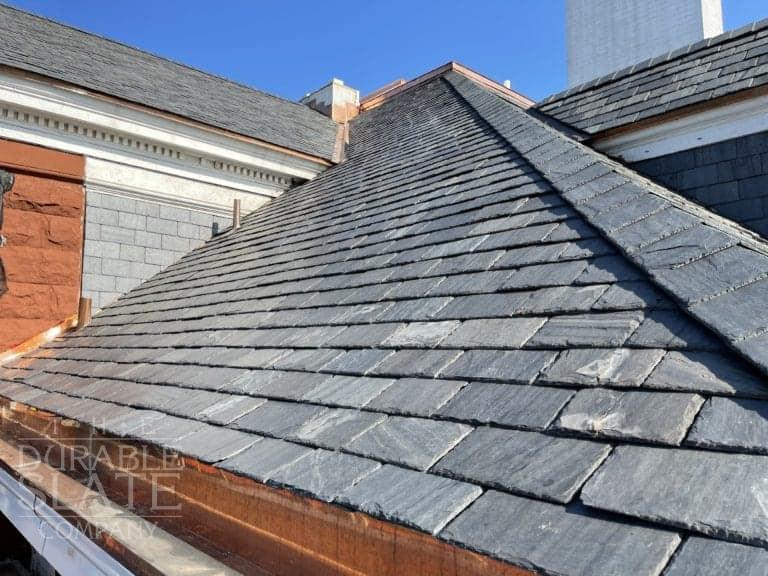Step-by-Step Guide to Locating the Right Roofing Companies in Gainesville
Step-by-Step Guide to Locating the Right Roofing Companies in Gainesville
Blog Article
Best Practices for Ensuring Proper Roofing Ventilation
A balanced consumption and exhaust vent proportion, frequently 1:300, plays a pivotal duty, with intake vents ideally put at the reduced side of the roof covering for trendy air entry and exhaust vents at the peak for warm air exit. Keeping insulation away from vents is critical to protect against airflow restriction.
Understand Air Flow Fundamentals
Effectively comprehending ventilation basics is crucial for making sure the long life and efficiency of roof. Efficient ventilation reduces wetness buildup and temperature level extremes in the attic room, both of which can bring about considerable structural damage gradually. A well-ventilated roofing helps in avoiding usual problems such as mold development, timber rot, and ice dams, which can jeopardize the integrity of the roof products and the underlying structures.
The key goal of ventilation is to promote the motion of air, permitting a consistent exchange between the outside and interior environments. This equilibrium is achieved through a combination of intake and exhaust vents that interact to maintain ideal airflow. Intake vents, usually situated along the eaves or soffits, enable fresh air to go into the attic space, while exhaust vents, often situated at or near the roof ridge, make it possible for warm, damp air to escape.
Key factors affecting the efficiency of roofing system ventilation consist of appropriate placement, ample sizing, and making certain that both consumption and exhaust vents are unobstructed. Normal assessment and maintenance are crucial to recognize prospective obstructions, damages, or inadequacies in the ventilation system, thereby protecting the roof's performance and resilience.
Kinds Of Roof Vents
Roof vents play a vital function in preserving effective attic room air flow and, by expansion, the overall health and wellness of the roofing system. Numerous types of roofing system vents are offered, each with special advantages tailored to details roof covering demands.

Soffit vents are mounted under the eaves and operate in tandem with roof covering vents to ensure a balanced intake and exhaust system. By permitting cooler air to enter from below, soffit vents help with the expulsion of warm air via upper vents. Gable vents, situated on the exterior wall surfaces of the attic, offer one more reliable remedy, especially in homes with gable roofs.
Examine Your Existing Air Flow

Next, think about the age and condition of your roof covering materials and air flow components. Older systems might not abide by existing building ordinance or may have weakened gradually, decreasing their performance. Conduct a thorough examination to recognize any indications of damage, such as rust, damages, or gaps that could compromise the system's performance.
Additionally, determine the attic room temperature and humidity levels. High temperatures and moisture can indicate poor ventilation.
Installation Best Practices
Effective installation of roofing ventilation systems is extremely important for making sure optimum performance and longevity. Appropriate setup begins with comprehending the details ventilation requirements of the roof covering and the structure it covers. This entails computing the correct proportion of consumption to wear down vents, normally adhering to the 1:300 guideline, which states one square foot of ventilation for every 300 square feet of attic floor area.

Consumption vents should be installed at the roof's reduced edge, commonly in the soffits, to enable cool air to enter. Exhaust vents, on the other hand, must be installed near or at the roof covering's optimal to facilitate the leave of cozy, wet air.
Seal all vent links carefully to avoid air leaks and prospective water seepage. Usage top quality materials and comply with producer standards to guarantee sturdiness and effectiveness. Furthermore, integrating ridge vents with baffles can significantly boost air movement effectiveness by protecting against wind-driven rainfall and snow from entering the attic room.
Eventually, specific installment of roof covering air flow systems minimizes prospective issues such as mold growth, ice dams, and architectural damage, making sure the roofing's integrity and the his explanation building's total health.
Regular Maintenance Tips
Consistency in maintenance methods is essential to making certain the long-lasting effectiveness of roofing ventilation systems. During these examinations, make sure that vents are cost-free of particles, nests, and other blockages that might hinder air movement.
Cleaning up the vents is another crucial job. Make use of a soft brush or a vacuum cleaner to eliminate dirt and particles from consumption and exhaust vents. Be mindful not to harm the air vent screens or louvers during the process. In addition, check the attic room area for any type of indicators of water damage, which can endanger the integrity of the roof.
Proper insulation is just as essential. Make sure that attic room insulation does not block the vents, as this can severely limit airflow. If any kind of insulation has shifted or cleared up, rearrange or change it to preserve a reliable barrier.
Finally, replace any type of harmed or missing components immediately. Broken vents, cracked shingles, or deteriorated blinking can all contribute to inadequate ventilation and should be attended to right away. Routine maintenance makes sure that the roof covering air flow system functions optimally, consequently expanding the life-span of the roofing itself.
Verdict
Making sure appropriate roofing ventilation is critical for keeping the effectiveness and sturdiness of a roofing system. Adherence to the 1:300 intake and exhaust air vent ratio, combined with the tactical placement of vents, read this post here is important.
A balanced intake and exhaust vent ratio, commonly 1:300, plays a pivotal function, with consumption vents preferably placed at the lower edge of the roof look at these guys covering for cool air entry and exhaust vents at the height for warm air leave. Intake vents, commonly located along the eaves or soffits, allow fresh air to go into the attic space, while exhaust vents, typically situated at or near the roofing system ridge, make it possible for hot, damp air to get away.
Soffit vents are set up under the eaves and job in tandem with roof vents to ensure a balanced consumption and exhaust system. By enabling cooler air to enter from below, soffit vents promote the expulsion of hot air via top vents. Adherence to the 1:300 intake and exhaust air vent ratio, paired with the critical positioning of vents, is vital.
Report this page